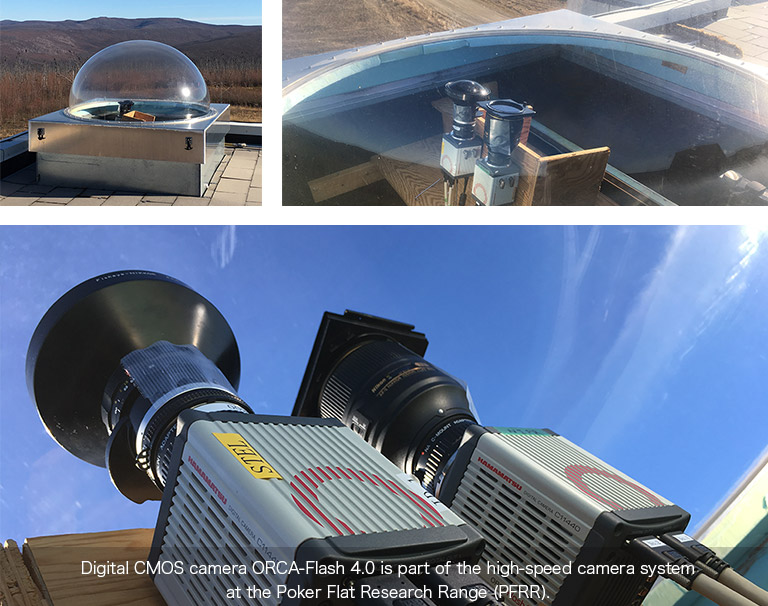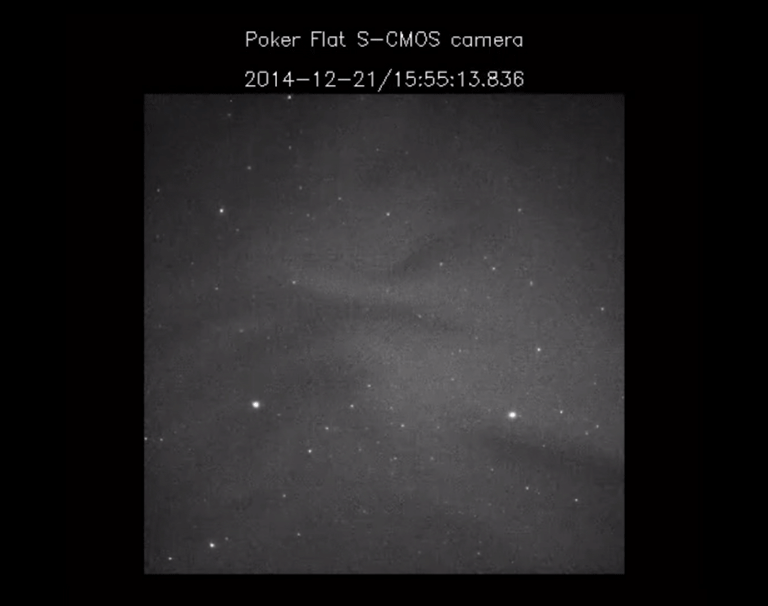Here's another updated view:

What is that AF-S lens? An 85mm F1.4 or 58mm F1.4? I wonder how they're controlling the aperture, or if they even care to. Maybe it's just left wide open. The smaller sensor will cut out any weird periphery aberrations anyway.
It's probably a 58mm F1.4, which is the closest affordable lens to the legendary noct-nikkor, and the 50mm F1.4 they were previously using.
Edit: Thanks to Wally and Roland, this is likely the 105mm F1.4E lens! I did not consider that at all. I have seen an array of Sigma's 105mm F1.4 being used for a similar application, so this makes a lot of sense.
Aurora imaging result:
